Interactive content is one of the best content formats for eCommerce businesses. It helps you get your visitors' attention, retain it, and bring them closer to a conversion.
.png?width=2240&height=1260&name=Blog%20visuals%20(99).png)
That’s because this type of content builds trust with online users and promotes brand loyalty and engagement.
This will keep your customers coming back again and again. Simply since the more they interact, the stronger their relationship to your brand grows.
In this article, we discuss some interactive content examples to help you improve your customer experience and ensure growth in 2024.
1. Online polls and surveys
Polls and surveys are among the top interactive content ideas you should consider. They’re an effective way to generate engagement and gain valuable feedback and data at the same time.
When you ask your audience about their opinions about your product, you let them have a say. Customers feel appreciated when brands listen to them.
See below an example of a survey we've made for the swedish company Bonti. The survey helps visitors choose the suitable baby pram for them, based on their answers:
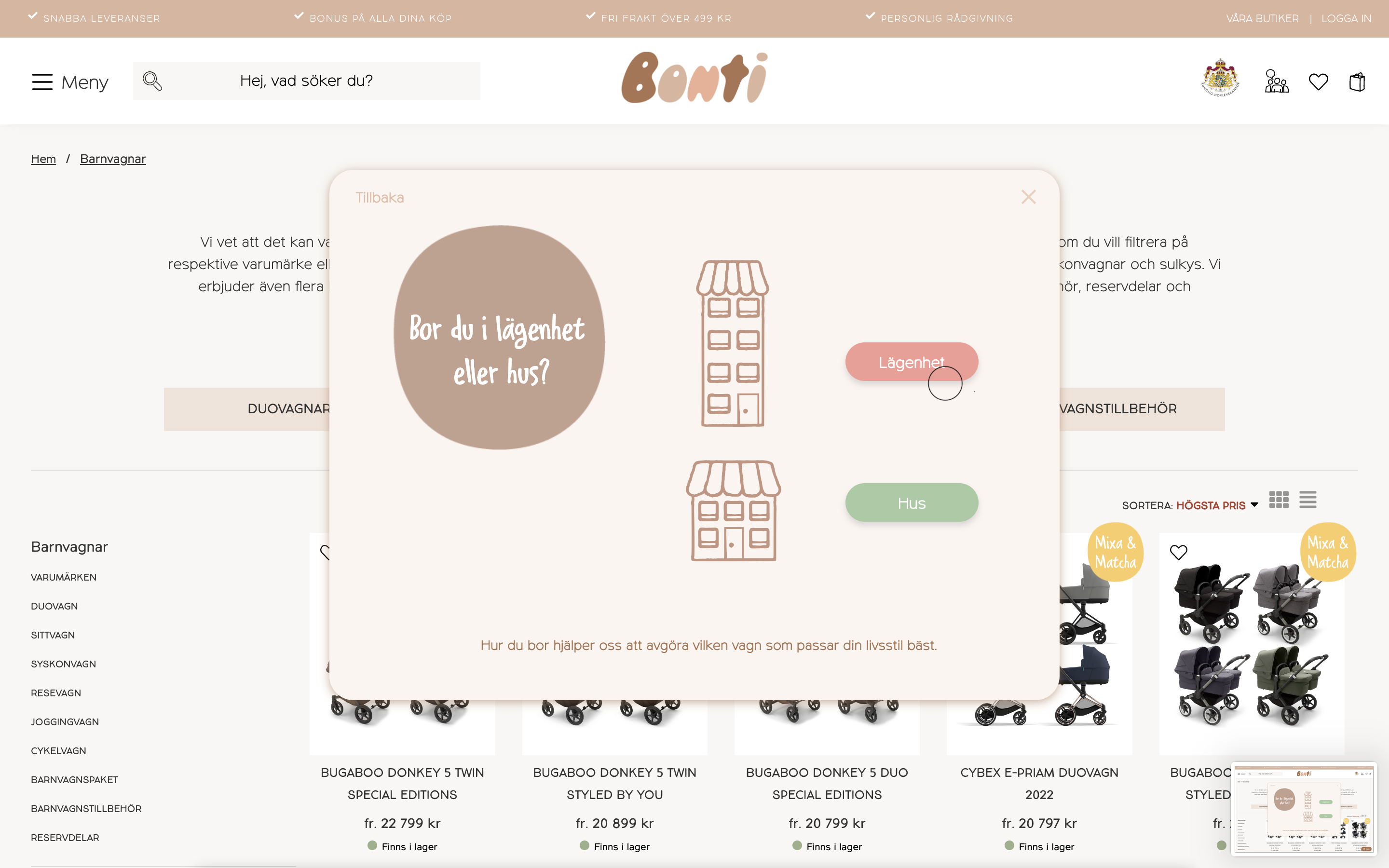
The good thing about polls and surveys is that you can also generate data that can help you know your target audience better.
Depending on your questions, the information you derive from your poll or survey data analysis can be used to create content or improve products that can resonate better with your audience.
For instance, if you find that many of your customers are choosing a three-wheeler pram on your survey, then you can highlight your three-wheeler prams on your website’s pram section. That can increase the chances of people clicking through and converting, too.
The most effective way of ensuring customer satisfaction is by getting feedback from your audience. Acting on this feedback makes consumers feel valued and improves brand affinity.
2. Chatbots
Chatbots use artificial intelligence to talk to website visitors.
They automate conversations with online users to answer queries and help them guide them throughout their buyer's journey.
Chatbots should be on any ecommerce business’ list of interactive content ideas for several reasons.
For one, studies show that chatbots increase sales by as much as 67%. One of the biggest reasons for this is that they allow you to provide quick customer service 24/7. That way, customers are never left waiting anxiously for assistance. Even if you’re asleep, your chatbot can give the necessary assistance.

For another, chatbots complement customer service reps. Chatbots can help reduce the work of human customer agents, who can focus on a customer’s more complex queries.
When S-Bank, a Finnish bank, for instance, deployed a chatbot to their website, the chatbot managed to solve 80% of customer problems. The remaining 20% was left for human agents to solve.
For example, Sato, a rental homes solution based in Finland, uses chatbots on their website. The chatbot provides visitors with the information they need depending on what they’re looking for. For instance, if they click on the “I’m looking for a home” option, they are directed to an application form they can fill out.
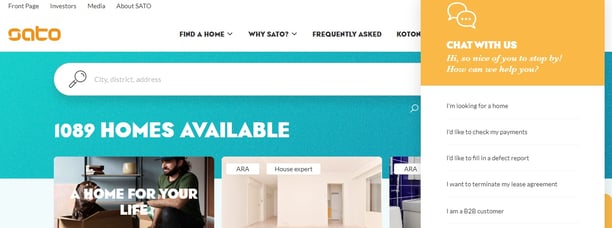
Image via Sato
If they click on the “I’m a B2B customer”, they are then instructed to leave their contact information so a Sato employee can contact them.
Overall, chatbots facilitate a smoother customer journey while saving the business time and money.
3. User-generated content
User-generated content (UGC) is another valuable asset for your website content strategy. User-generated content is original, brand-specific content created by other people who are not directly affiliated with your brand.
Zappos, a fashion retailer, is an excellent example of how user-generated content can be utilised by an e-commerce business. Once a visitor clicks on a product they’re interested in, they see how other users wore the product on the page’s “How It Was Worn” section.
Putting your brand name on a customer's work can also have a strong impact and take your brand authenticity to another level.
As a result, this enhances trust and builds brand loyalty.

Image via Zappos
User-generated content can also work as social proof. When potential customers see that people who have purchased the same product are very satisfied with it, they are more likely to go on with their purchase.
You can even partner with influencers so they will produce the content for you. You can easily reach out to them about a potential collaboration via DMs or use an email address finder to get their contact information. Influencers can help boost your sales by swaying the opinions of their followers.
This approach opens up avenues for establishing connections and initiating discussions regarding possible partnerships or projects.
Another way to leverage user-generated content is by using AI-generated images. AI image generators can quickly produce stunning visuals tailored to your needs.
Embracing this technology can help businesses enhance their branding and marketing materials, making it easier to connect with their audience online – hence making your UGC efforts more effective.
A good suggestion to find AI-generated images is on websites like Freepik. This saves time and effort while ensuring your visuals stand out.
Among the available choices, you can also use photo editing software that can promptly generate, modify, and transform your photographs into remarkable works of art with minimal effort.
4. Interactive Videos
Modern-day consumers have limited attention spans. Content that provides immersive experiences can help you get around this.
Videos are a great example of this type of content.
K-Ruoka, for instance, a Finnish retailer, provides an excellent user experience through the videos on its website. K-Ruoka shows how-to videos so website visitors will know how to use the ingredients they buy from the site.
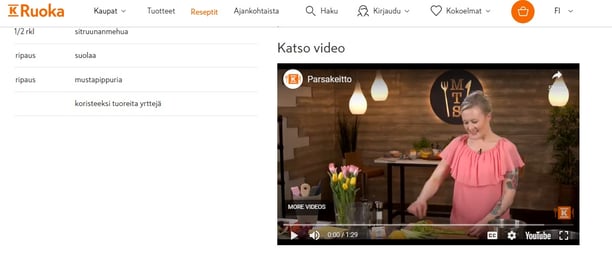
Image via K-Ruoka
You can take this a step further and make the videos interactive. Shoppable videos are moving images that allow viewers to engage with them.
For example, a product video can offer its viewers direct clickable links to purchase the product straight from the video.
Interactive content like this can increase engagement and viewing time by 66% and 44%, respectively.
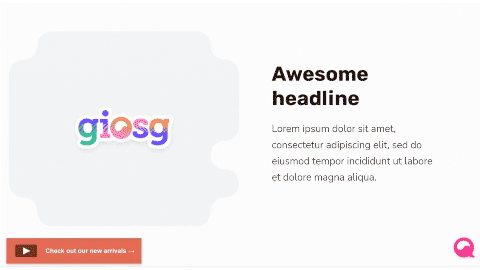
However, it is essential to create your interactive videos with potential customers in mind. They should always complement your website content.
Just think about it. Your website visitors access your website to read your content. That just means if you have content there that’s not related to the pieces they’re interested in, then they’re more likely to leave.
5. Guided selling
Imagine your ecommerce store sells audio equipment such as headphones, speakers, and microphones.
Now imagine a user browsing your store and they’re looking for wireless Bluetooth speakers that can be mounted onto your walls, with dimensions around 200 x 100 mm, and priced around $200.
Can they easily find products that fit this description?
Most likely, they’ll have to browse through your entire selection of “speaker” products to be able to find what they’re looking for.
Interactive guidance provides an easier shopping experience for consumers by allowing them to easily find what they want in seconds. It encourages “shopping around” and reduces customer fatigue.
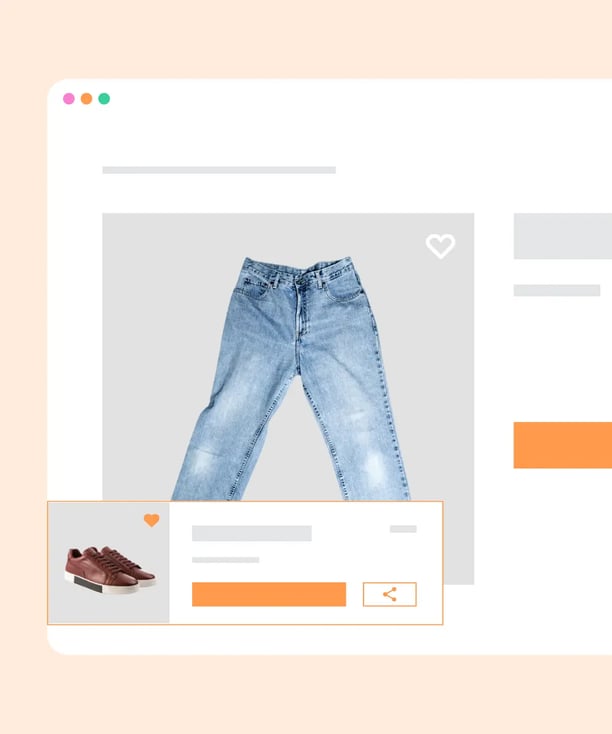
Setting this up will require either months of development work or using a dedicated tool for this. You can, for instance, generate and customize interactive databases or utilize tools like giosg's to have it all set up in seconds without any need to code.
In closing
Ecommerce businesses can no longer ignore interactive content.
Interactive content can help you get your website visitors’ attention and retain them. The longer you retain your visitors’ attention, the more likely they are to convert to your site.
You learned five interactive content ideas from this article. Polls and surveys, user-generated content, chatbots, interactive videos and guided selling can all add value to your website.
You don’t need to use all of these at once.
Pick one or more and experiment.
With the proper testing, you’re bound to find the perfect interactive content combination that suits your business needs. The result? You’ll increase your website engagement and help your ecommerce business grow.
If you want to develop any of these ideas further, get in touch with our experts to set up a custom solution for you!
About the author
David Campbell is a digital marketing specialist at Ramp Ventures. He helps manage the content marketing team at Right Inbox. When he's not working, he enjoys traveling and trying to learn Spanish.
Connect with him on LinkedIn